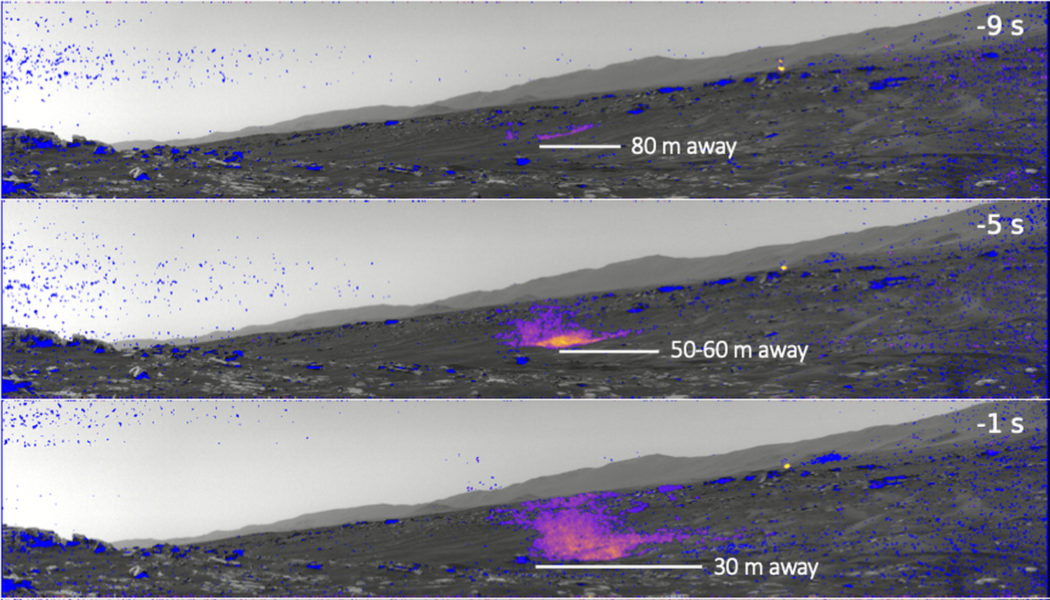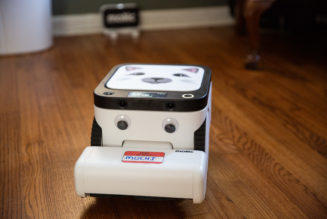The Perseverance rover listened in as a dust devil whirled by its location on Mars.
/cdn.vox-cdn.com/uploads/chorus_asset/file/24291936/image_1__1_.png)
On September 27th, 2021, a dust devil whirled past the Perseverance rover on Mars. The rover not only caught the dust devil on its cameras and with its weather sensors but also picked up the faint, eerie sounds of the dust devil on its microphone, the first instrument of its kind to record sounds on Mars.
“We were convinced that the microphone was going to give us a whole load of new observations of atmospheric features on Mars that we hadn’t been able to see before,” Naomi Murdoch of the University of Toulouse, lead author of a Nature Communications paper about the research, said to The Verge. “And we haven’t been disappointed!”
Rovers have been exploring Mars for decades with cameras, spectrographs, and weather sensors, giving us a better picture than ever before of what the environment on the Red Planet is like. Now, sounds are being added to the list. This combination of data is allowing researchers to understand more about these dusty phenomena and the impacts they could have on future robotic and crewed missions.
Dust devils arise due to atmospheric conditions that are common on Mars. “You have to have a really large temperature gradient between the ground and the air,” Murdoch explained. “So the ground gets really warm, and this heats up the air, which then makes the air start to rise. And as the air starts to rise, things start to rotate, and that’s when you get this whirlwind-like motion.”
This process happens here on Earth, too, but what is notable about Martian dust devils is just how large they can get. The dust devil recently detected by Perseverance was 25 meters wide and 118 meters tall (82 feet by 387 feet), putting it squarely in the average zone in terms of size for Martian dust storms. But they can grow much bigger, too, as dust on Mars can be whipped up in huge global dust storms.
“One of the big problems we have right now is that we can’t predict dust storms very well,” Murdoch said. And that has implications for everything — from trying to land spacecraft safely on Mars to trying to keep dust off vital solar panels to keep robotic missions going. Current models especially struggle to predict the large global dust storms, and that seems to be because it’s hard to model the forces that are lifting dust up off the planet’s surface.
Researchers know that forces like wind shear and dust devils can lift dust off the surface, but there are plenty of open questions about exactly how this happens. One particularly odd finding is that while dust devils are common in the Jezero Crater where Perseverance is located, they are notably rare in Elysium Planitia, the area in which the InSight lander is located, and it’s not clear why.
That’s where the microphone comes in. “What our microphone is sensitive to is specifically the wind speed. So when we see wind gusts, we see a large increase in the sound amplitude on the microphone, just like when you’re talking on the phone and it’s windy,” Murdoch explained. “We’re using that background noise to study the wind.”
With so many scientific instruments on Perseverance needing operating time, the windows available for microphone recordings are each just a few minutes long. To maximize their chances of detecting a dust devil during these short periods, the microphone team timed those windows for periods in the afternoon, when dust devils are most active. Each window is only a few minutes long, and they had just eight windows per month — so it was a combination of careful planning and a healthy dose of luck that this recent dust devil was captured.
/cdn.vox-cdn.com/uploads/chorus_asset/file/24291929/Dust_Devil_Sound_Spectrogram.png)
As well as picking up data about the wind conditions, the microphone also detected the sound of small impacts: single grains of dust that were striking the area around the microphone and making a detectable ping. By counting each of these impacts, the researchers could see how dense these particles were within the dust devil — a measurement that no other instrument has been able to take and that could help to model how dust devils lift particles from the surface.
This research is just an early example in the burgeoning field of using acoustic data in planetary exploration. For a planet or moon with an atmosphere, acoustic instruments can collect data at a high sampling rate, allowing observations of fast-changing events like wind gusts compared to tools like wind sensors, which operate on timescales of a few seconds.
“Our sampling rate is much higher than all of the regular weather sensors that you’ll find on planetary rovers and planetary landers,” Murdoch said. “With a microphone, it’s a bit like using a microscope. We’re looking at what’s happening at these really short time scales.”
There’s also the human fascination that comes along with hearing the sounds of another planet. NASA’s playlist of Perseverance sounds allows anyone to experience the noises of the Red Planet, from the whistling of the wind to the whirring of the rover itself, all enabled by SuperCam’s microphone.
“Our microphone bandwidth is exactly the same bandwidth as the human ear, so the sounds we’re hearing aren’t adjusted in any way. They’re the sounds that you would hear if you were standing on another planet,” Murdoch said. “And that’s really cool.”









